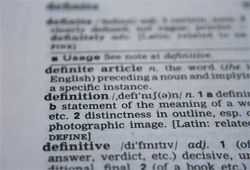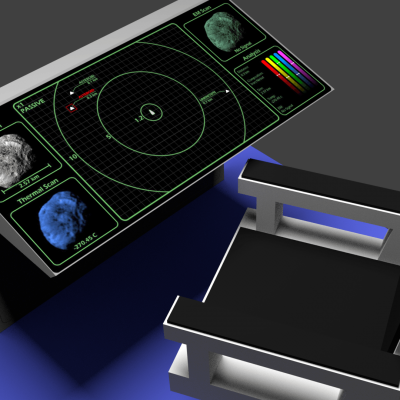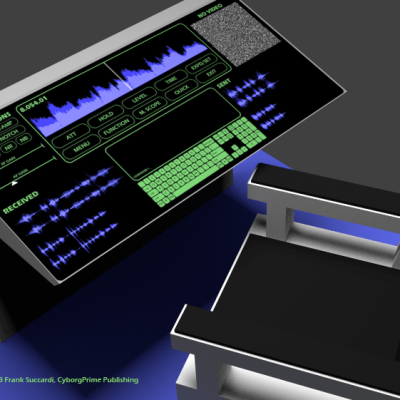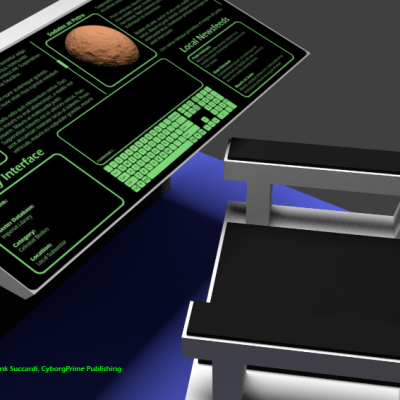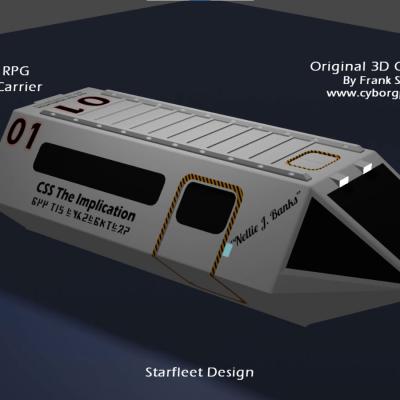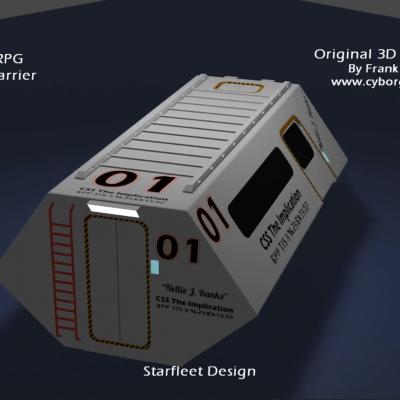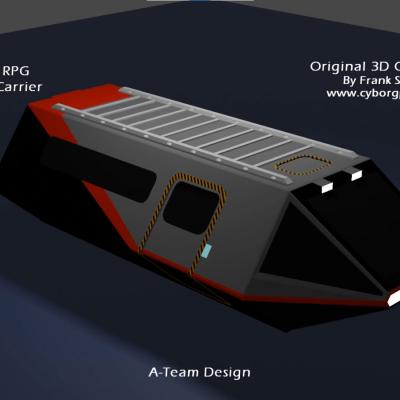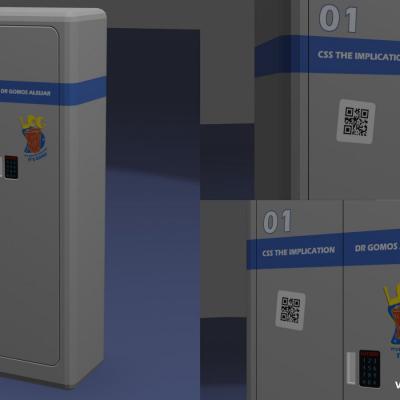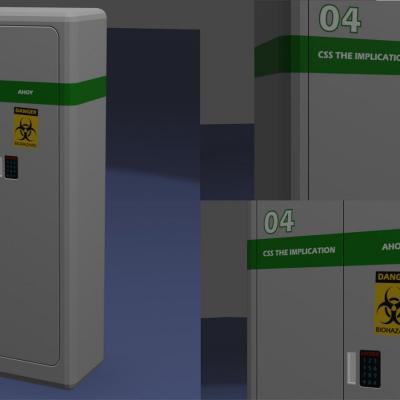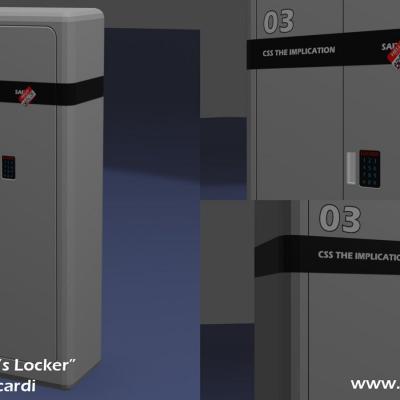Have you always wondered what Traveller RPG character creation is like? This guide explains Traveller’s innovative character creation method.
Traveller Character Creation
Traveller has a fun and innovative character creation process that generates characters complete with backstories. The character generation in Traveller is one of the things that initially attracted my interest. It's one of the aspects that Traveller is known for.
This article is an attempt to explain how to play Traveller, with a focus on the character creation rules. I've endeavored to make a complete guide and it is pretty long, so I have included a Table of Contents for your convenience.
Article Table Of Contents
- Intro To Traveller Character Creation
- General RPG Terms
- Traveller Campaign Types
- What Kind Of Dice Do I Need?
- Rolling Dice In Traveller
- Traveller Game Terms
- Rolling Up A Traveller Character
- Characteristics In Traveller
- Character Background
- How Long Is A Term?
- School Or Career: Pursuing Your Character's Dreams
- Ending Character Creation
- Choosing A Campaign Skill Pack
- Contacts, Rivals, Allies, And Enemies
- Injuries and Medical Bills
- Purchasing Starting Gear
- Conclusion
I hope you enjoy my little article enough to consider trying out a game of Traveller. It has given me thousands of hours of enjoyment with friends.
Introduction To Traveller Character Creation
Tabletop role-playing games are making a come-back and my favorite sci-fi tabletop RPG, Traveller, is no exception.
One of the reasons I fell in love with the Traveller is its unique character creation system.
Character creation in Traveller is very different than character creation in other RPGs you have played.
In other RPGs, you start your character at Level 1 and are usually a young adult 16-18 years old when you start your adventures.
In Traveller, you can start the game with an experienced character with many skills or you can start out fresh out of high school with very few skills to start.
How old and experienced your character is when you start depends on dice rolls and player choices throughout the character creation process.
The process is meant to simulate being tossed by circumstances into situations you may not have expected, just like in real life.

A Personal Example From Real Life
I wanted to be an astronaut when I was a kid, but due to life circumstances, largely beyond my control, I ended up as a programmer, then a multimedia producer, then an author, and then a game designer.
Traveller attempts to recreate the feel of going through the travails of life.
The benefit of this character creation method is that your character ends up with a rich backstory and personal history.
Some people don’t like the creation process in Traveller because you can sit down intending to roll up a Space Marine and end up with a Scholar instead due to unfortunate dice rolls.
Part of the fun of the character creation mini-game is that you can roll up another character if you don’t like the one you generated. Still, some people would rather get to playing instead of rolling up characters they aren’t interested in playing.
Traveller Pro Tip: Save all those “dud” characters to use as NPCs or pre-rolls for new players.
Thankfully, there are alternative character generation methods included in the rules that give you more control over your character creation.
In this article, we will go over the standard character generation procedures as outlined in the Traveller Core Rulebook, Second Edition by Mongoose Publishing.
(Download a FREE Traveller PDF: Intro to Traveller Rulebook)
(Download the Traveller Core Rulebook from DriveThruRPG)
Some General RPG Terms
Traveller is very much like other role-playing games; it has players and a GM.
Traveller also has some aspects unique to its game mechanic as well as terms commonly referenced in the sci-fi genre.
Here’s a quick overview of common terms used in Traveller. Some will be familiar and some might be new.
Role-Playing Game (RPG)
Traveller is a science-fiction role-playing game developed in the late 1970s.
Traveller has been in constant publication across a wide variety of license holders and publishers since its initial release.
What defines a role-playing game?
A role-playing game is any collaborative storytelling game where the players portray the roles of characters in the story.
How do you play an RPG game?
Most RPG games need at least two players. One player (usually the host) is the Referee or Game Master (GM), and the rest of the players are characters in a situation thought up by the GM.
Play advances through cooperative storytelling, with the players controlling what their characters do and the GM controlling all the other characters in the game.
Sometimes dice are thrown to help decide on critical plot points as the story is told.
The GM proposes a situation and the players respond with how their characters would act under the given circumstances.
For example, the GM might decide the characters are in a bar when a fight breaks out. The players decide if their characters join the fight, hide under the table, go out the back door, or whatever.
The GM then decides how the character’s actions have changed the situation and describe the next thing that happens, the players respond, and gameplay continues until the scenario has been resolved with the players succeeding or failing at the scenario proposed by the GM.
Player
All games need players. In Traveller, players portray the main characters in a science-fiction story.
The players generate characters through the character creation process, then use those characters as protagonists in the story.
Players control their own characters and decide what types of actions their characters would perform and how they would react under different situations.
Referee (or GM)
In Traveller, one player is the Referee (commonly called, the Game Master, or GM in other role-playing games).
The Referee is usually the one who hosts the game. They come up with the ideas for the scenarios the group will be playing through.
The Referee plays all the background characters and antagonists and presents all the challenges and dangers the characters encounter along their way.
Traveller Games
Traveller games are usually played in one or more sessions. Session length varies, but most sessions last about 4 hours. Marathon game sessions running 10 hours or more are not unheard of, and sometimes one-shot games can conclude in 4 hours or less. It really depends on how much time you and your friends feel comfortable with.
Sometimes people gather at home or sometimes they hang out at a local game store or conventions. Gaming restaurants and pubs are also becoming more popular (check out Slice and Dice Pizzaria).
If players can’t be in the same physical space because they are separated geographically, they can still play Traveller online using a virtual tabletop (VTT) system, such as Roll20 or Fantasy Grounds.
(Looking for other Traveller Players? Check this article about How To Find Traveller RPG Players)
Scenarios
The Referee will usually consult with the players ahead of time, to find out what kinds of sci-fi they are interested in playing. What specific genre and tone are they looking for?
Is the game to be an optimistic utopian future, like Star Trek. Perhaps you prefer the more gritty lower-tech feeling of Aliens or The Expanse?
The Referee will find out if the players like adventure, horror, comedy, military, exploration, or trade stories and endeavor to create something suitable for the group.
Optionally, Referees can purchase pre-made commercial adventure “modules” that contain everything needed for a Traveller scenario.
Adventures
Adventures are collections of related scenarios. Adventures can be played out in one or more sessions.
Think of adventures like movies. They have a beginning, middle, and end. They take the characters through a series of scenarios and hopefully the characters are changed in one way or another by the end of the story.
(Check out The Relic by Frank Succardi of CyborgPrime Games)
(Check out Michael Brown’s Series of Adventures for Traveller)
Campaigns
A campaign is a series of related adventures that tell an over-arching story. Campaigns can take as few as 3 sessions or as many as 30 adventures or more.
Think of campaigns like a series of movies. Each campaign consists of at least two or more related adventures.

Traveller Campaigns
The types of campaigns you can play is limited only by your imagination and interests.
Common types of Traveller campaigns:
- Travelers - The players are just a group of adventurers seeking their fortune among the stars. One week they might be hauling cargo between star systems, the next they might be involved in a political coup.
- Explorers - The players are surveying newly discovered planets and determining if they are suitable for colonization or harvesting of resources. Maybe they will find uncooperative locals and engage in diplomacy instead?
- Traders - The players purchase goods and haul them to places where those goods are in demand. “Buy low and sell high” is their motto and there’s nowhere they won’t go for a profitable deal.
- Military Personnel - In this type of campaign the players might be active duty military personnel or perhaps mercenaries. They might be hired to guard a research installation or to drive out hostile competitors for a megacorp’s expansion into “new markets”.
- Scientists - In this type of campaign, the players do research and make discoveries. Maybe they are scanning strange phenomena at a nearby star and selling the data for profit. Maybe they are studying theoretical sciences and developing new technologies for a government lab? Maybe they are studying the dangerous artifacts of the enigmatic precursor race known as the Ancients?
These are just some general ideas of some ways different groups might play. It’s entirely up to you and your group friends. Work together to find something that is interesting for everybody to participate in.
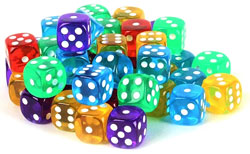
What Kind Of Dice Do I Need To Play Traveller?
Traveller is played with standard 6-sided dice you might find in a game of Monopoly or Yahtzee.
If you don’t have any dice laying around, you can get some at Wal Mart, Walgreens, and other places where poker cards, games, or liquor are sold.
Another option is to buy some cool 6-sided dice from a local gaming store. Dice come in all kinds of cool colors and many people keep a dice bag full of their favorite dice.
Traveller has a classic dice style called “Traveller Dice” that features a starburst pattern with the numbers superimposed, but they are hard to get.
I suggest dice from Easy Rollers; they have a huge selection of beautiful dice.
You only need 2 dice to play, but a couple of extra dice at the table is nice to have.
(Get great 6-sided dice from Easy Roller Dice)
Rolling Dice In Traveller
There are various opportunities to roll dice in Traveller.
You roll dice when you create characters and you roll dice when you want to determine the outcome of something uncertain or critical in the game.
Traveller Game Terms
You might notice some strange notations in the rules with regards to dice. If you have played role-playing games before you are probably already familiar with most of these terms, though some refer to Traveller game mechanics specifically.
1D6 / 2D6 / xD6
Whenever you see a number in front of “D6” it means to roll that number of 6-sided dice and (the ONLY kind of dice used in most versions of Traveller).
So, 2D6 means “roll two 6-sided dice and add them together”, and 3D6 means “roll three dice and add them together”.
Sometimes you will see a roll notation with another number afterward, like +1 or -1. When you see 2D6+3 that means “roll two dice, add them together and add 3”, and 2D6-3 means “roll two dice, add them together then subtract 3”.
D3
When you see a D3, that means to roll a 3-sided die.
Wait, what?
A 3-sided die is just a regular 6-sided die, but you generate numbers from 1-3 by dividing by 2 and rounding down.
If you roll a 1 or 2, that’s a 1
If you roll a 3 or 4, that’s a 2
If you roll a 5 or 6, that’s a 3
D66
Some tables are marked D66. That’s a special way to roll regular 6-sided dice that gives you numbers from 11-66, a total of 36 possibilities.
The way it works is you roll two 6-sided dice and read them separately; do not add them together.
The first die is the 10s digit (10-60) and the second die is the 1s digit (1-6). Put them together and they generate numbers from 11 (rolled two 1’s) to 66 (rolled two 6’s).
(For more info on ways to roll D66, check my video How To Roll D66 Using Regular Dice)
Rolling The Dice
During the course of play, characters will try to accomplish various tasks such as climbing a fence, shooting a gun, piloting a ship, and so on.
The player rolls 2D (two 6-sided dice) and adds them together as normal then adds any Dice Modifiers.
If the total of the roll and modifiers is equal to or higher than a target number determined by the Referee then the attempted task is a success.
If the total of the roll and modifiers is less than the target number then the attempt is a failure.
Task Notation
Task difficulty uses a special notation to indicate the Target Number for the roll and what Characteristic Modifier you should use as the Dice Modifier.
If you see a number with a plus sign after it, that means to roll that number or higher. Therefore, 8+ means “eight or more”.
For example:
- DEX 7+ means “roll two 6-sided dice, add your DEX modifier and try to get a total of 7 or more”.
- INT 10+ means “roll two 6-sided dice, add your INT modifier and try to get a total of 10 or more”.
You will see this notation often during character creation.
Checks
If the outcome of a task is uncertain or if it’s important to the story, the Referee will ask for a dice roll from the player attempting the task. This type of dice roll is called a “check”.
Checks come in two major categories: Characteristic Checks and Skill Checks.
Characteristic Checks - Characteristic checks are made to test the strength of a characteristic under pressure. Roll 2D and add the associated Characteristic Modifier, trying to meet or exceed a target number.
The Referee will determine the target number according to the circumstances of the situation. If you are doing something under ideal conditions, the target number will be low like 6 or 4, or maybe not even require a roll. If you are trying to do something difficult, the target number will go up to 10 or 12 or more.
If the Referee asks for an “average strength check”, you roll 2D adding your STR modifier and try to get 8 or more. There is a range of predetermined “difficulty levels” ranging from 2 (simple) to 14 (formidable).
Skill Checks - Skills checks are made to test the strength of a character’s skill under pressure. Roll 2D and add the appropriate Characteristic Modifier as usual, but also add in any skill levels you might have in an appropriate skill, or add -3 for being untrained in the skill you are attempting.
Dice Modifier (DM)
A dice modifier is a number that is either added or subtracted from a roll.
The notation looks like this:
- DM -3
- DM +4
This means “subtract 3” and “add 4” respectively.
Natural 2 and Natural 12
“Natural” means the number you rolled without and modifications; just the naked roll.
Rolling two 1s is a “natural 2” and roll two 6s is a “natural 12”.
Tech Level (TL)
Tech Level is a way to express the relative technological level commonly available on the planet or even within a geographical region.
Common tech levels in Traveller range from 0 to 15, with no theoretical upper limit.
The low end of the TL spectrum is 0 and represents Earth’s stone-age. Only the simplest tools and intellectual principles are available.
We are considered to be somewhere towards the end of TL 8 in the modern age on Earth.
Tech Level 9 is what we would consider “cyberpunk”.
Faster Than Light travel becomes possible at TL 10 with the discovery of the Jump Drive.
At Tech Level 15, the Jump 6 engine is discovered. Force fields and deflectors become commonplace.
During character creation, Tech Level only serves as background information for your character.
You might decide that you want to come from a high-tech or a low-tech planet, for instance. It doesn’t really have much bearing but it helps inform your decisions during the creation process.

Rolling Up A Traveller Character
Rolling up a character in Traveller is like a minigame.
Players progress through the character creation process, generating characteristics, pursuing careers, and gaining skills and backstory.
Traveller's innovative character creation process is the first of its kind. It has been modified over the various editions to evolve into the system we use today.
Traveller Background Generator
The Traveller character generator system has a built-in background generator which helps create characters with their own rich backstory.
As you proceed through character generation, your character will have a series of life events that add to their experience, skills, and backstory.
Characteristics In Traveller
Traveller uses a set of six characteristics to describe the relative mental and physical abilities of the characters.
The characteristics are very similar to other role-playing games. There are three Physical Characteristics and three Mental Characteristics.
Physical Characteristics
STR (Strength) - This measures a character’s physique, fitness, and physical strength. It determines how much she can lift, hor far she can jump, and how hard she can punch.
DEX (Dexterity) - This is the measurement of a character’s nimbleness, accuracy, and finesse. It determines how good they are at keeping their balance, jumping out of the way, aim a gun, throw something and hit a target, or using fine motor skills to manipulate intricate objects.
END (Endurance) - This is the measurement of a character’s stamina. It determines how long they can work without rest, how resistant the person is to poison, how long they can hold their breath, and how long they can go without food and water.
Mental Characteristics
INT (Intellect) - This is the measurement of a character’s intelligence. It determines quick-thinking, noticing things that are out of place, and coming up with original ideas.
EDU (Education) - This is the measurement of a character’s ability to learn new things and recall facts. It determines how much trivia they know, how much formal educational training they received, and how far they’ve gone in school or in studying certain subjects.
SOC (Social Standing) - This represents a character’s place in the social hierarchy. It determines their standard of living. Characters who have money to spend on luxury items are more likely to have a higher social standing. Characters who live on the streets have low social standing. Characters with high SOC may even hold a noble title.
Hit Points
In Traveller, a character’s Hit Points (or life level) is STR+DEX+END. For the average character, this is 21.
When a character takes physical damage in the game, they subtract points from this total. First, END is lost and once it reaches zero, then either STR or DEX is lost (player’s choice).
When two Physical Characteristics are reduced to zero, the character falls unconscious.
When all three Physical Characteristics are reduced to zero, the character has died.
Rolling Characteristics
To generate your character’s various characteristics, begin by rolling 2D six times and recording the roll totals. You should end up with six numbers from 2-12.
Next, assign each of those numbers to a different Characteristic.
Once you have assigned all your rolls, you’ll determine your Characteristic Modifier which will be used in the future to modify dice rolls.
Characteristic Modifiers
Characteristic modifiers act as Dice Modifiers when making checks.
| Characteristic Modifier Table | |
|
Score |
Modifier |
|
0 |
-3 |
|
1-2 |
-2 |
|
3-5 |
-1 |
|
6-8 |
0 |
|
9-11 |
+1 |
|
12-14 |
+2 |
|
15-17 |
+3 |
|
18-20 |
+4 |
Keep in mind that although you can roll a characteristic up to 12, the normal human maximum is 15.
Characters can only go over 15 through extraordinary means, such as cybernetic enhancement or advanced drugs.
There is no theoretical upper limit for characteristics.
To calculate the Characteristic Modifier for any given Characteristic value, divide the value by 3, round down, then subtract 2.

Character Background
Next, choose your character’s background. This is up to your imagination and will help inform some of your future character creation decisions.
Traveller characters enter play with a fully generated background story that you can flesh out further if you wish.
Choose A Homeworld
You can choose a homeworld from any of the existing Traveller settings, or make up your own.
Did your character come from a low tech world, where his family ran a farm and saved up their money to send him off-world for a better education or life opportunities?
Did your character come from a high tech civilization where they never had to work and could just pursue personal interests?
Skill Notation
You might see the skills listed in two different ways.
If a skill is listed with a number after it, such as Medic 1, that means you get Medic at level 1.
If you already had Medic at 1 or higher, you get no net benefit. No need to feel ripped off, you just already knew the topic better than the level you were being trained at.
If you didn’t have Medic at all or had it at level 0, you would raise it to one.
If a skill is listed without a number at it, like Medic, that means you get to increase your medic skill by 1 level.
If you didn’t have Medic at all, you would get Medic at level 1. If you already had Medic at level 1 you would increase it to 2.
Note that during character creation, no skill may go over level 4. Any additional levels are lost.
There is a limit to how much a character can learn. A character can never have more total skill levels than (INT+EDU)x3.
Select Background Skills
You are allowed to select a number of background skills (modified by your EDU modifier) that you picked up through experience and training in your life on your homeworld.
You get these skills at level 0, which means basic familiarity.
WIth your home behind you and a handful of low-level skills your character is 18 years old and is ready to begin play.
Most people, however, choose to take their character development further by going through the Character Creation process where their character seeks a career or education, and gain some additional life experience before deciding to go off on adventures.
Players do this by pursuing careers or education for a number of terms before voluntarily ending the creation process, or by being forced out due to rolls or events that occur along the way.
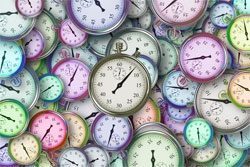
How Long Is A Term?
A term is 4 years.
If a person is forced out before they can complete a term they are still considered to have spent 4 years.
School or Career: Pursuing Your Character's Dreams
Just like in real life, you can choose to start your adult life by attending university or by jumping right into the job market.
Both traditional university and military academy count as Education Careers.
You can only enter university/academy during one of your first three terms, so you can try at a job for two terms then attend university for your third term but after that, you cannot try to go back to university.
If you seek additional education for your character, you can do so through advancement in the game.
Careers are discrete groups of similar job types and range from Agent to Citizen to Military Services, and even Pirate and
Qualify For Career
Whether you choose university or career, you will have to roll dice to see if you qualify to enter the chosen career. Each career lists a qualification roll you must make in order to find a job in that career this term.
Each time you roll to qualify for a career, you get a DM -1 for each previous Career you have entered.
This means if you have diversified your career choices in the past, it will become increasingly difficult to apply for a new career. It looks like you just bounce from job to job and most employers don’t like that.

Enter Career or Draft or Drift
If you qualify for the career you can go to the associated career table and start rolling on the skill tables.
If you fail to qualify, you can spend a term as a Drifter or you can submit to the military Draft.
Sometimes you can fail to qualify for military service but then get drafted into a different or even the same military branch you failed to qualify for.
Receive Basic Training
For your first career, you get all the skills in the Service Skill table for that career at level 0.
For subsequent careers, you can pick one skill from the associated Skill Table for basic training for that new career.
Citizens and Drifters get to use the appropriate assignment skill table for their basic training.
Skills gained in Basic Training are in addition to any skills rolled for this Term.
Career Specializing
Each career is broken into three specialties.
Choose a career specialty for your character to concentrate on this term.
Roll for Skills
Generally, there is a Personal Development table, A Service Skill table, and a table for each of the career specializations. In addition, there are sometimes additional tables like Advanced Education and Advancement Skills.
When rolling for skills, you may choose any skill tables you qualify for.
Roll For Survival
Every career specialty has a survival roll. If you succeed you can roll on the Events table if you fail you roll on the mishap table.
Rolling a natural 2 on your survival roll is an automatic failure, no matter your Dice Modifier.
Have an Event or Mishap
Depending on your Survival roll, you can either have an Event that relates to your chosen career or suffer a mishap.
These events and mishaps contribute to your character’s rich background story.
Establish Connections
When rolling up Traveller characters, it is recommended that you do character creation with all the players at the same time. Proceed through each term together, going around the table and finishing each player’s term before moving on to the next.
This allows the players to see what the other players are doing and possibly come up with stories that connect them with each other.
If two players can come up with a story to link with each other’s events, each player gets an extra level in the skill of their choice.
The skill can be one the character doesn’t already have in which case she gets the skill at level 1.
If the character already has the skill, they increase it by 1 level (not to exceed level 3).
Players can get a maximum of two skills from the connection rule, but each connection must be with a different character.
Roll For Career Advancement
If you succeeded in surviving this Term without being forced out by a Mishap, you must try to advance in your career by rolling for advancement.
Each career specialty has an advancement roll.
If you roll a natural 12, you must continue in this career; something has happened to prevent you from leaving. Maybe your employer made you a good offer, or maybe you love the career and don’t want to leave, or maybe your employer REALLY needs your services this term. Maybe you are simply stuck in a situation where you can’t possibly leave.
If you make this roll you get a promotion and move up one rank and receive any skills associated with that new rank. You also get to roll for a skill on any career table you qualify for.
If the advancement roll is equal to or less than the number of terms you already served in this career, then you are forced out and cannot continue in this career; this is your last term in this career.
If you fail to advance you may still receive a Rank 0 skill, so be sure to check the Rank Bonus Skills.
You can choose to change careers or stop character creation at the end of this term
Age and Checking for Aging Effects
At the end of each term, your character’s age increases by 4 years.
If you get too old (age 34 or older) there is a chance you will suffer the effects of aging.
If your character ages badly, your characteristics can become reduced.
Continuing Or Ending Character Creation
At the end of each term, if you haven’t been forced out, you can decide if you want to continue in this career for another term, switch careers, switch specializations within a career, or end the character creation process.
If you want to continue in your career, then repeat the creation process starting back at the Roll For Skills phase.
You do not have to re-qualify for a career you are already in unless you change your specialization assignment.
If you want to change careers, repeat the creation process from the Qualify for a Career phase.
Leaving Career? Roll for Benefits
If you leave a career for any reason you gain a number of benefit rolls that represent cash and material objects gained during your term.
You get a benefit roll for each term you served. If you were forced out due to a mishap and didn’t complete a term, the benefits roll for that term is lost.
You receive extra benefit rolls for any advancement rank earned in this career. If you achieved a high rank in your current career, you may also get a DM +1 modifier to your benefits rolls.
Cash and items higher on the table are generally more valuable.
For each career, there is a Cash table containing various increasing amounts of money, and a Benefits table with increasingly valuable items.
Characters are only allowed to make a total of 3 rolls on cash tables during character creation, no matter how many benefits they have earned.
For instance, if a player used all their cash roll on a low-paying career then changed to a high paying career and earned additional benefits, they could not roll on the Cash table for the new career; they spent all three of their cash rolls already.
Earning A Pension
If a character has served 5 terms (20 years) in any career, they can retire with a pension.
They will receive a yearly pension payment according to the type of career they were in.
Ending Character Creation
At the end of any term, you may opt to stop character creation and begin the game with the character is it is so far.
You may choose to do this to avoid possible aging damage, or you may just be happy with where your character is and maybe not interested in going further.
Most people roll characters around 30-34 years old, but it is up to personal preference.
You can stop character creation immediately after receiving Background Skills, or you can keep going in careers until you are forced out at a much older age.
Choose A Campaign Skill Pack and Allocate Skills
Now that all the characters have been rolled up and everybody is ready to begin their space-faring adventures, it’s time to make sure the group has all the skills they will need.
The Referee will choose a Campaign Skill Pack and allow the characters to go around the table one at a time selecting skills from the list until all the skills on the list have been allocated. This has the effect of giving people a chance to get a skill they wanted but might have missed due to bad rolls.

Contacts, Rivals, Allies, And Enemies
During the course of their careers, characters may meet people along the way. Some of these people will become friends or allies, some of these people will become rivals or enemies.
Use these non-player characters as in-game resources as a way for a player to feel a real connection to their character’s past because they have in-game relationships.
Injuries And Medical Bills
During character creation, it’s possible to become injured due to aging, events, or mishaps the character experiences in the course of their careers.
There are ways to help pay all or portions of the medical bills, but any medical bills not settled during character creation will become debt the character starts the game with.
Purchase Starting Equipment
Now that all the characters are ready to begin their adventures.
Pass around the rulebook and allow characters to outfit their characters with up to 2000 credits worth of starting gear, taken from their starting cash rolls.
You have now completed Session Zero.
Conclusion
As you can see, the Traveller character creation system can deliver a detailed character complete with a backstory.
By the time your character is ready to play, she has:
- Chosen a homeworld
- Selected background skills
- Enrolled in university
- Pursued their careers (or careers)
- Received skills and benefits from serving terms in their chosen career
- Advanced in their careers and gained life experience through events and mishaps
- Outfitted their character with starting gear
Congratulations! You have a new Traveller character with a complete backstory and are ready to take on the sci-fi adventure wonderland known as Traveller.
If you enjoyed this article, please let me know down in the comments section. I'm also interested in hearing about any cool characters you've generated in Traveller.
I hope you get as much enjoyment as I have from playing Traveller and I wish you Happy Travelling!
Ready To Start Your Traveller Career?
Download a copy of the Intro To Traveller RPG PDF FREE.
Download a copy of the Mongoose Traveller Core Rules 2nd Edition from DriveThruRPG.
Download the Traveller RPG Starter Kit from DriveThruRPG.
E-mail Notification Opt-in
Do you want to receive email notifications when we add new Traveller / sci-fi RPG content?
Sign up on our private mailing list.
YES! Notify me of new Blog posts!

